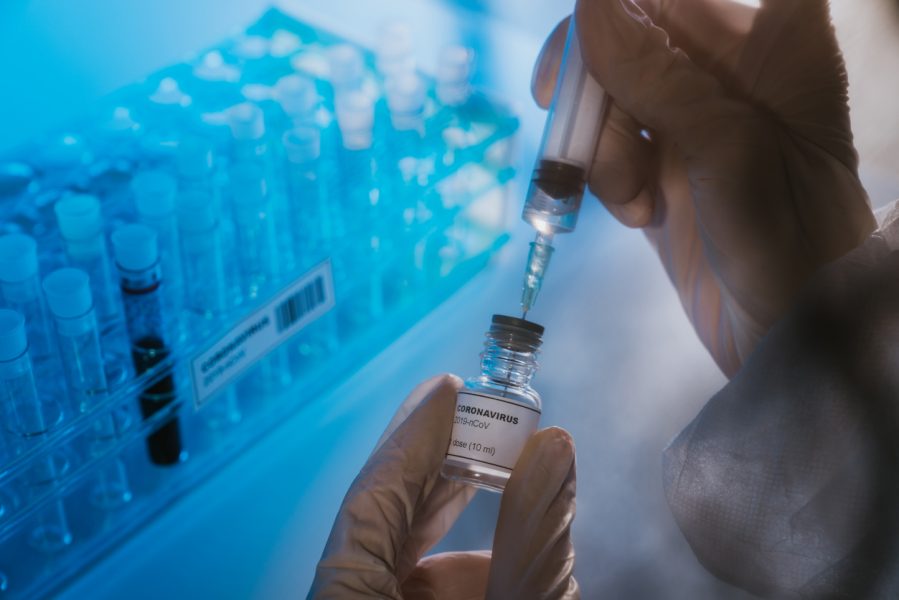
COVID-19 vaccine may be ready in a year or two, but not anti-vaxxers

The world is waiting anxiously for a COVID-19 vaccine. Some diehard optimists say it will be ready by the end of the year. Others are cautious. They say the entire process of running a series of trials before the vaccine is found safe and effective will take at least a year or more. Its large-scale production and distribution will increase the time further. By the time you and I receive the shot, it may be 2022.
Will the availability of vaccine ensure that everyone accepts it? Common sense says ‘yes’. But it’s wrong.
There is an eerie similarity between the virus and vaccine. If the virus is present across the globe, so is resistance to the vaccine. The resistance is so widespread that the World Health Organisation (WHO) declared that reluctance or refusal to vaccinate as one of the top 10 major threats to global health.
In 2019, The Lancet journal said 90 per cent of the countries in the world had reported the phenomenon.
Related News: COVID-19 pandemic halts vaccination for nearly 80 million children
India is no different. Health administrators and policymakers are aware of the reasons for the hesitancy in vaccination. The polio, H1N1 and MR (measles-rubella) campaigns are recent examples of it. Some of those reasons will resurface in different form and shape, but some would be unique. Here are a few of them.
Once available, who will get the COVID-19 vaccine? This isn’t clear yet. Most of the prominent immunization drives have targeted children, not adults. If the same logic and practice is applied in the case of COVID-19, then what about the employed and productive adults, and those who are over 60 years. The former operate the economic wheels, while the latter constitute a large proportion of the vulnerable population.
It will require a herculean effort on the part of the health system and colossal resources on the part of the government to vaccinate a substantial part of the population. All this will adversely affect other ongoing health programmes—signs of which have already begun to appear. The policymakers will be hard-pressed to reset their priorities.
Related News: Indian-origin scientist identifies four possible drugs to treat COVID-19
The second question: Who will administer the vaccine? Will it be the trained government health workers or private medical practitioners or both? The issue had bedevilled the MR campaign. Those who were poor and lived in outreach, peri-urban and hard-to-reach areas readily accepted the vaccination from government health workers for children below 15 years.
However, the urban, outspoken and media-savvy middle and upper class did not. Their notion of quality healthcare revolved around the private practitioner—either clinic or private hospital-based. It could well be the same issue with COVID-19.
The elite classes’ behaviour was no different during the H1N1 outbreak. The government repeatedly asked people to visit public health facilities. Instead, they admitted themselves to private hospitals. But, when tests revealed that they were H1N1 positive, the hospitals shifted them to government hospitals, where they died because of the delay.
Related News: COVID-19 vaccine: Human trials start globally, but still no guarantee
But in the popular perception, government hospitals were held responsible because that was where patients died. Public healthcare facilities have always had an image problem and COVID-19 may tarnish it further. Given the enormity of the impending challenge, the government will have to consider allowing private hospitals to immunize persons with the disease.
A policy-related question will be the mode of delivery of COVID-19 vaccine. Will it be in campaign mode as with polio or would it integrate into the health system and be delivered in programme mode? Mode of delivery of vaccines influences outcomes.
A campaign mode of delivery garners support, attention and visibility, but sucks too much out of the system and relegates other health programmes into relative neglect. It also leaves health workers tired and demotivated. A COVID-19 vaccination programme, on the other hand, requires all hands on deck approach, much like HIV, TB or leprosy programmes do. Both approaches have built-in limitations.
Related News: Human challenge trials for COVID-19 vaccine: A risky time-saver?
Finally, herd immunity. Simply put, the concept means that a sufficiently large number of people are vaccinated so that those who are not (or cannot be) vaccinated are less likely to be exposed to infection and less likely to contract the disease. For highly infectious diseases such as measles, public health policies prescribe that vaccination should cover 95 per cent of the population so that it indirectly protects the remaining 5 per cent, who for some reason are not (or cannot be) vaccinated.
However, COVID-19 is not as infectious as measles is (preliminary data indicates that it infects, on average, 3 persons, whereas a person with measles potentially infects up to 18 others in a susceptible population). If that estimate of 3 per cent is correct, then scientists calculate that a country should achieve herd immunity when around 60 per cent of the population becomes immune to COVID-19.
To get a sense of the scale of the effort required to immunize these many people note that it took more than two decades for children at 12-23 months of age to receive full immunization as part of the Universal Immunization Programme.
Having a safe and effective COVID-19 vaccine, we can win only half the battle. The other half will be won on how quickly and efficiently we manage and implement the vaccination drive.
(Pradeep Krishnatray is former director, Research and Strategic Planning, Johns Hopkins Center for Communication Programs, New Delhi)

